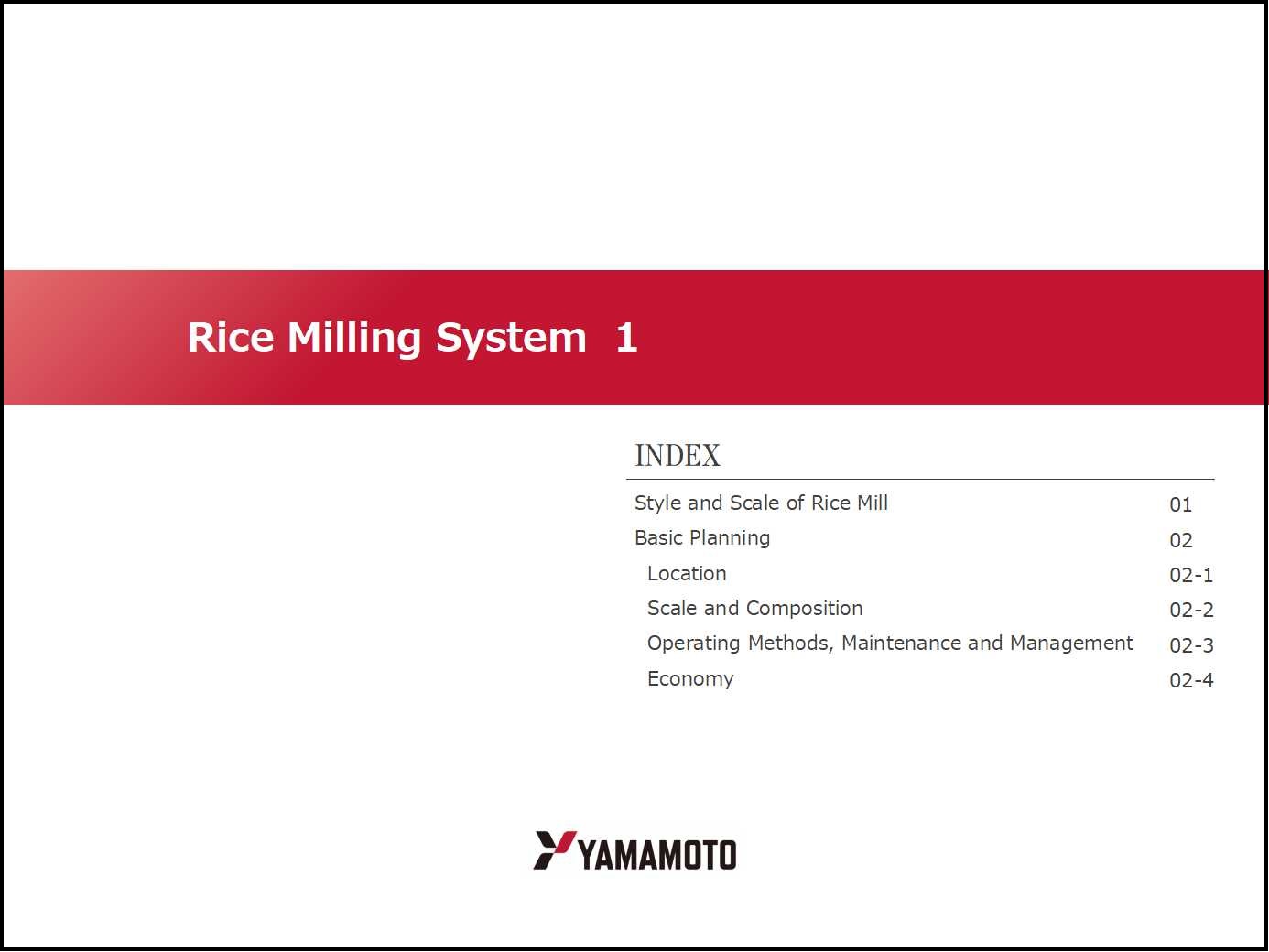46. Rice Milling System 1
- INDEX -
Style and Scale of Rice Mill
Basic Planning
Location
Scale and Composition
Operating Methods, Maintenance and Management
Economy
Style and Scale of Rice Mill
Rice mills in Japan receive brown rice from rice producers. Therefore, these rice mills do not dry, store or dehull paddy. Even in the rice growing areas, rice mills are frequently located in urban areas of towns and small cities where rice is consumed. Conversely, in other parts of the world, rice mills are generally located in rice growing areas, although there are also some mills in urban areas.
This is because processes from drying and storage of paddy to husking and polishing are all performed in rice mills. The scale and style of rice mills in various countries differ according to how rice is produced, social environmental, and market conditions. There are generally three types of rice mill: Small custom mills which mainly mill rice for farmers, private commercial rice mills, and governmental or public corporation rice mills.
The basic characteristics of commercial rice mills are commercial activities such as purchasing raw rice from rice farmers after harvesting at as profitable prices as possible, drying, storing and milling paddy to produce white rice of a suitable quality for the market, and selling it for the highest profit.
Governmental or public corporation rice mills have the role of providing a stable domestic supply of milled rice, as well as commercial activities. Irrespective of whether applying mechanical drying or drying in the sun, the drying and storage of rice are important processes in rice mills. This section does not describe the drying and storage of rice in rice mills. Rice mills are described mainly in terms of husking and polishing dried paddy.
